S-300V anti-aircraft missile system: against aircraft, cruise and ballistic missiles
Do we have many air defense systems? In the late 1950s, after the adoption of the armament of the USSR Air Defense Forces, the transported S-75 air defense system was also supposed to be used in the air defense units of the Ground Forces. However, a sufficiently long deployment and folding time, low mobility of the complex, for the transportation of numerous elements of which wheeled tractors were used, the use of rockets fueled with liquid fuel and a caustic oxidizer, made it impossible to accompany troops on the march. As a result, the main means of air defense of the front and army units became the Krug air defense missile system, which was adopted in 1965. All elements of the anti-aircraft missile battery of this complex were located on a caterpillar chassis and were able to move in the same traveling order with tanks. The range and height of the destruction of air targets of the Krug air defense system is comparable with the latest modifications of the S-75 air defense system. But, unlike the S-75, the Krug family of air defense systems used radio command missiles with a ramjet engine running on kerosene. The most recent Krug-M1 air defense systems were mass-produced until 1983 and operated by our armed forces until 2006. Complexes of this type were armed with anti-aircraft missile brigades of army and front submission. But already in the early 1980s, the Krug air defense system did not fully comply with the requirements of noise immunity. In addition, the military wanted to have a universal multi-channel military complex, which, in addition to combating air targets, could protect the concentration of troops, headquarters and other important objects from tactical and operational-tactical ballistic missile attacks. It was decided to assign these tasks to the S-300V anti-aircraft missile system, the development of which began in the late 1960s.
When creating the S-300 air defense system, it was assumed that in the new multi-channel medium-range anti-aircraft missile system developed for the Ground Forces, the Air Defense Forces of the country and the Navy, a unified missile and general radar facilities will be used. In the second half of the 1960s, the developers considered it realistic to use the same SAM and radar to destroy aerodynamic and ballistic targets, placing them on a wheeled and tracked base, as well as on ships. However, it soon became clear that the specifics of the use of complexes under various conditions requires an individual approach. USSR anti-aircraft missile units relied on a developed radar network and automated control systems. Traditionally, anti-aircraft battalions defended strategically important facilities, carrying combat duty on stationary, well-trained engineering positions. The air defense systems of the Ground Forces often worked in isolation from the radio engineering units, and therefore their own means of detection, target designation and control were introduced into their composition. During the design of the marine complex, special conditions had to be taken into account: pitching, salt spray and the need to combine with other ship systems. As a result, the development of S-300P, S-300V and S-300F air defense systems was entrusted to various organizations. Only the S-300P and S-300V systems detection radars, as well as the SAMs used in the S-300P and S-300F air defense systems, were partially unified.
ZRS C-300B
The S-300V military anti-aircraft missile system was conceived as a universal means of missile and air defense. It was supposed to provide protection against MGM-52 Lance, MGM-31A Pershing IA ballistic missiles, SRAM air-ballistic missiles, cruise missiles, long-range bombers, tactical and carrier-based aircraft aviation, combat helicopters - with their massive use in the conditions of active fire and electronic countermeasures of the enemy. Due to the need to defeat aerodynamic and ballistic targets for the S-300V air defense system, two new types of anti-aircraft missiles had to be created and, to ensure the required level of mobility, in front-line off-road conditions, all the main system elements were placed on a tracked chassis. All S-300V air defense systems use a unified tracked base, borrowed from the 203-mm self-propelled gun 2S7 “Peony”. At the same time, taking into account the specifics of the placement of elements of the air defense system, the engine and transmission compartment was moved to the rear of the machine. One refueling was enough for a march of up to 250 km at a speed of up to 50 km / h and combat operations for two hours. All S-300V combat vehicles were equipped with their own power supply sources and telecode communication facilities.
Due to the high complexity, the work was carried out in two stages. In 1983, the S-300B1 air defense system was adopted, designed to destroy aerodynamic targets and tactical ballistic missiles of the MGM-52 Lance type. Initially, the system included: 9C15 Obzor-3 all-round radar station, 9C457 mobile command post, 9C32 multi-channel missile guidance station, 9A83 self-propelled launcher, and 9A85 self-propelled launcher.
The three-coordinate 9C15 Obzor-3 radar operating in the centimeter frequency range provided detection of aircraft at ranges up to 240 km. Lance ballistic missiles could be detected at a range of 115 km.

The antenna post and all the station's hardware are located on the Object 832 tracked chassis. A 47-horsepower diesel engine was installed on a 840-ton tracked vehicle. Crew 4 people.
The control of anti-aircraft missile battalions was carried out from command post 9S457. At the same time, radar information from airborne and ballistic target detection stations and missile guidance stations was sent to the mobile control unit via communication lines. Due to the high degree of automation of combat work, operators could process up to 200 air targets, escort up to 70 targets, receive information from a higher command post and 9C32 missile guidance station, determine the type of target, and also select the most dangerous ones. Every 3 seconds, target designation for 24 targets could be issued. The time from receiving target marks to issuing instructions while working with 9C15 radar is 17 seconds. In the missile defense mode, the average information processing time is 3 seconds, and the target designation line is from 80 to 90 km.
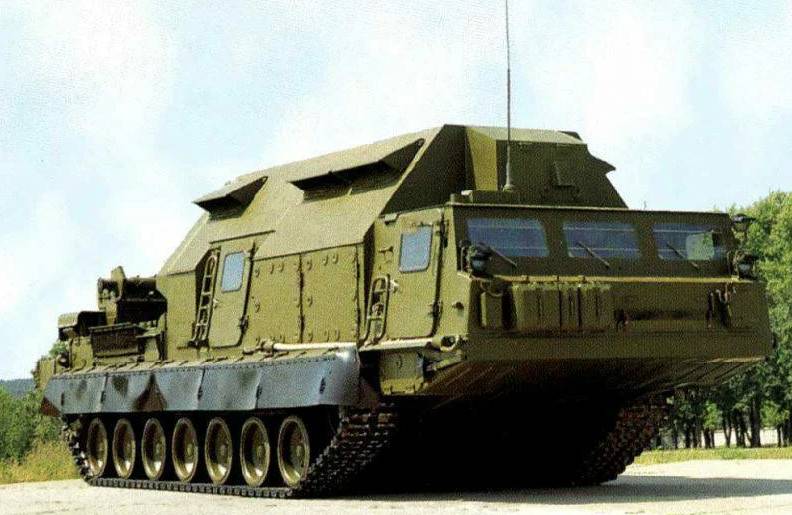
All means of the 9C457 command post are mounted on the Object 834 crawler chassis. The mass of the 9C457 mobile command post in combat position is 39 tons. The crew is 7 people.
The 9C32 multi-channel missile guidance station was built using a three-coordinate coherent-pulse radar operating in the centimeter frequency range. The use of a phased array antenna allows electronic scanning of the beam. Beam control is performed by a special computer. The station can search for targets in a given sector both autonomously and in target designation mode and at the same time control launchers and launchers. Based on the received target designation, the guidance station searches, detects and captures targets assigned for shelling for auto tracking. Capture can be done automatically or manually. Simultaneous firing of 6 targets is provided, when pointing 2 missiles at each.
All means of the 9C32 multi-channel missile guidance station are installed on the special Object 833 tracked chassis. The mass in combat position is 44 tons. The crew is 6 people.
The 9A83 self-propelled launcher has four 9M83 anti-aircraft guided missiles in transport and launch containers and preparations for launch, a target illumination station, telecode communications equipment, topographic and navigation equipment, and a gas turbine engine for autonomous power supply.
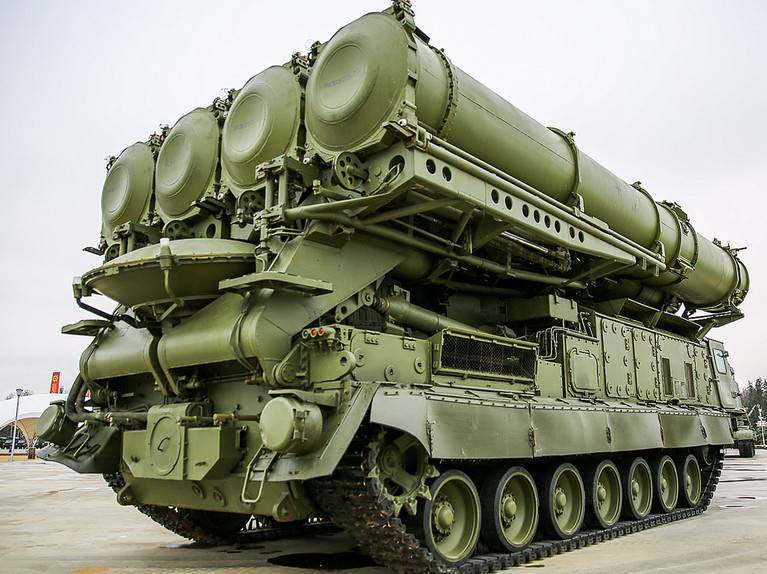
The preparation of missiles for launch is carried out after receiving a command from the 9C32 multichannel guidance station. The installation is capable of launching two of the four missiles with an interval of 1,5-2 seconds. During the operation of 9A83, there is a constant exchange of information with 9C32, target designation is analyzed and the target position is displayed in the affected area. After launching anti-aircraft missiles, the launcher issues information to the 9S32 guidance station about the number of SAMs launched from it or with a launcher associated with it. The antenna and transmitting systems of the target illumination station are switched on for radiation in the transmission mode of the radio correction command for missiles, as well as its switching to radiation in the target illumination mode.
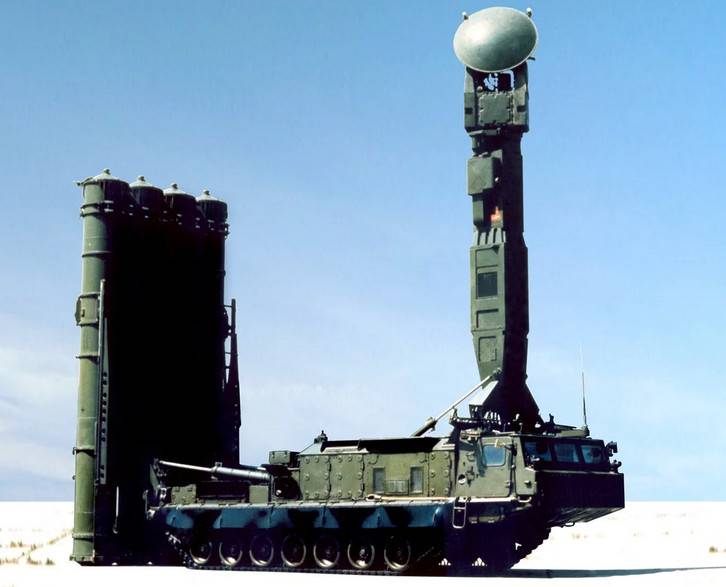
All elements of the 9A83 launcher are mounted on the special Object 830 tracked chassis. The mass in combat position is 47,5 tons, the crew is 3 people.
The launcher is charged using the 9A85 launcher. With preliminary cable pairing, the time for switching the PU equipment from its own missile launcher to the ammunition of the launcher does not exceed 15 seconds.
On the tracked chassis "Object 835" PZU 9A85 placed not only transport launch containers with anti-aircraft missiles and hydraulic drives translating them into a vertical position, but also a crane with a lifting capacity of 6350 kg. This allows you to charge SPU 9A83 or self-loading from the ground and from vehicles. Full 9A83 loading cycle - at least 50 minutes.
Unlike other elements of the S-300V air defense system, a diesel unit is used instead of a gas turbine to provide power to the 9A85 ROM. The mass in combat position is 47 tons, the crew is 3 people.
Initially, only the 300M1 SAM was used as part of the S-9V83 air defense system, which was designed to destroy aircraft in conditions of intense radio resistance, cruise missiles and ballistic missiles of the MGM-52 Lance type.
9M83 is a solid fuel two-stage rocket made according to the aerodynamic scheme "bearing cone" with gas-dynamic controls of the first stage. Four aerodynamic steering wheels and four stabilizers are located on the tail compartment of the marching stage. The defeat of the target is provided by a fragmentation warhead of directional action, weighing 150 kg. Missiles have been in transport and launch containers for at least 10 years without inspections and maintenance.
The rocket is launched in the vertical position of the TPK using a powder pressure accumulator. After the rocket leaves the transport and launch container, pulse engines are turned on, orienting the missile launcher toward the target, after which the first accelerating stage is launched. The operating time of the first stage is from 4,2 to 6,4 seconds. When launching into the far zone on aerodynamic targets, the engine of the marching stage is started with a delay of up to 20 seconds with respect to the moment the engine starts the starting stage. Marching engine runs from 11,1 to 17,2 seconds. Missile control is carried out by deflecting four aerodynamic rudders. SAM is aimed at the target by a command-inertial control system according to the method of proportional navigation with the transition to homing about 10 seconds before approaching the target. Targeting can be carried out in two modes. The first is inertial control followed by homing. In this mode, on-board equipment of the rocket receives information on the position of the target via a radio channel. When approaching a target, it is captured using homing equipment. The second mode is a command-inertial control method with subsequent guidance. In this mode, the rocket is followed by a guidance station. When the required distance to the target is reached, the missile captures the target with homing equipment and is deployed in the immediate vicinity for the maximum effect of the directed warhead. Undermining the warhead is carried out at the command of a radio fuse when a reflected signal from a target appears in the receiver. With a miss, self-destruction is carried out.
The length of the rocket is 7898 mm, the maximum diameter is 915 mm, and the mass is 2290 kg. Weight SAM with TPK - 2980 kg. Flight speed - 1200 m / s. The maximum overload is 20 G. The far border of the affected area is 72 km, the nearest - 6 km. Reach in height - 25 km, minimum height - 25 m. The capture range of the target seeker with an ESR of 0,1 m² is 30 km. The probability of defeating a type of MGM-52 Lance BR was 0,5-0,65, and the targets of the fighter type were 0,7-0,9.
For the mid-1980s, the S-300V1 air defense system had outstanding characteristics. The 9M83 missile was comparable to the 5V55R missile used in the S-300PT-1 / PS anti-aircraft missile in terms of range of aerodynamic targets. At the same time, the S-300V1 army air defense system had the ability to combat tactical missiles. However, an acceptable probability of combating ballistic missiles with a launch range of more than 150 km and a reliable defeat of SRAM aviation aeroballistic missiles were not provided. To destroy such complex goals, the 9M82 missile system was created, the refinement of which lasted until 1986. The 9M82 missile looks similar to the 9M83 missiles and has the same layout and guidance methods, but at the same time it was larger and heavier. The 9M82 missile was intended primarily to deal with the detached warheads of MGM-31A Pershing IA ballistic missiles, SRAM air-launched ballistic missiles and jamming aircraft.
The curb weight of the 9M82 missile is 4685 kg. Diameter - 1215 mm, length - 9918 mm. The flight speed of the rocket is 1800 m / s. Range affected area - up to 100 km. The minimum firing range is 13 km. Reach in height - 30 km. The minimum height is 1 km. The probability of damage to the warhead of the MGM-31A Pershing IA missile of one 9M82 SAM is 0,4-0,6, and the SRAM missile is 0,5-0,7.
For the use of 9M82 missiles, proprietary radar systems, self-propelled launchers and launchers were created. Thus, the developers actually created two maximally unified complexes designed to destroy TRs with a short firing range (15–80 km) and aerodynamic targets at ranges up to 72 km, as well as OTR with a long firing range (50–700 km), small-sized supersonic KR and large high-altitude jammers at ranges up to 100 km.
In full force, the S-300V air defense system was put into service in 1988. The anti-aircraft missile division, in addition to the tools already mentioned, included: 9C19M2 "Ginger" radar, 9A82 launcher and 9A84 launcher.
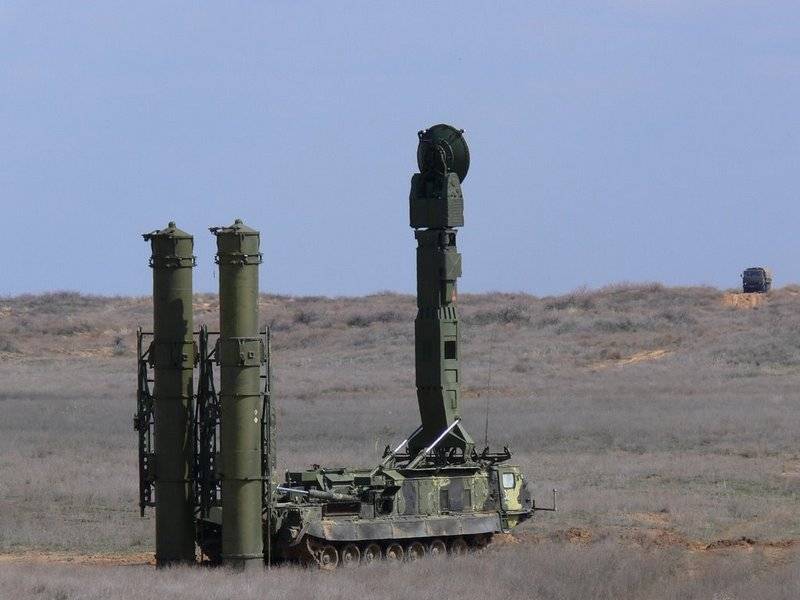
The main difference between the self-propelled launcher 9A82 and the launcher 9A84 from the SPU 9A83 and 9A85 is the use of larger and heavier missiles. This required the use of more powerful means of loading and loading and led to a reduction in the number of missiles on one machine to two units.

The main difference between the SPU of “heavy” missiles is the design of the device that takes the containers to the starting position, and in the mechanical part of the target illumination station. The mass, dimensions and mobility characteristics of machines with two 9M82 missiles correspond to machines with four missiles.
Radar program review 9S19M2 "Ginger" operates in the centimeter frequency range, has great energy potential and high bandwidth. Electronic scanning of the beam in two planes allows quickly providing an analysis of target designation sectors from the KP 9C457 system with a high rate (1-2 s) of accessing the detected marks for tracking high-speed targets. The scheme of automatic compensation of wind speed (drift of dipole reflectors) in combination with high-speed electronic scanning allows us to ensure invulnerability from exposure to passive interference. High energy potential and digital processing of received signals provides good protection from active noise interference.
In the Pershing ballistic missile detection mode, the viewing area is ± 45 ° in azimuth and 26 ° - 75 ° in elevation. In this case, the angle of inclination of the normal to the PAR surface relative to the horizon is 35 °. The survey time for the specified search sector, taking into account the tracking of two target paths, is 13-14 seconds. The maximum number of trails followed is 16. Provides visibility at a distance of 75-175 km. Every second, the coordinates and parameters of the target’s movement are transmitted to the CP of the system. To detect high-speed cruise missiles in the range of 20-175 km, the mode of viewing the space is ± 30 ° in azimuth, 9-50 ° in elevation. The parameters of the movement of targets are transmitted to the CP via a telecode communication line twice a second. When working with high-altitude aerial targets and jammers, the direction of view is set via the telecode line of communication with the system’s CP or the station operator and is ± 30 ° in azimuth, 0-50 ° in elevation, with the angle of inclination of the PAA normal to the horizon of 15 °. The 9S19M2 radar is capable of detecting high-speed targets with a small reflective surface in the presence of strong interference, when the operation of other radars is impossible. The station equipment is located on the tracked chassis "Object 832". The mass of the radar in combat position is 44 tons. Calculation - 4 people.
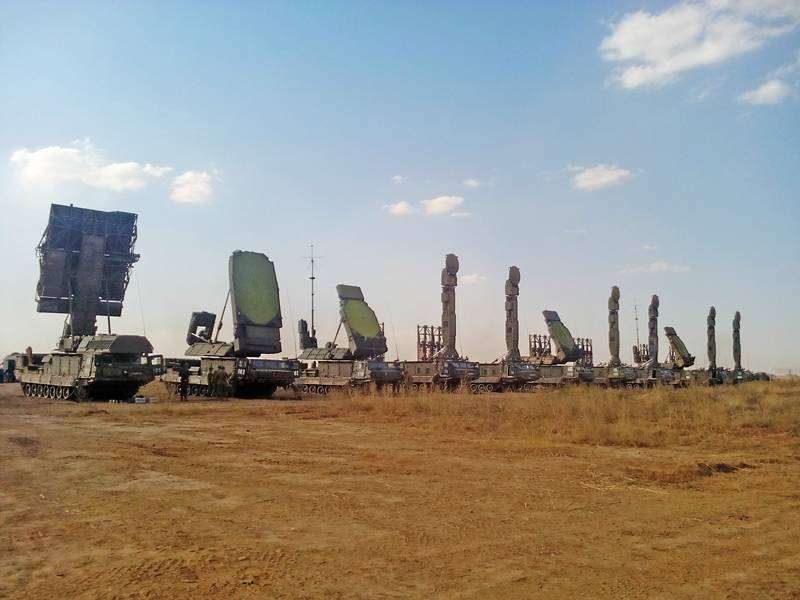
After it was adopted in 1988, the S-300V air defense missile division in its final form consisted of KP 9S457, 9S15M radar, 9S19M2 radar and three or four anti-aircraft missile batteries, each of which included one 9S32 multi-channel missile guidance station, two launchers 9A82, one launcher 9A84, four launchers 9A83 and two launchers 9A85. In addition to the main combat vehicles, guidance stations and radars, the division also has means of energy supply, technical support and maintenance on the chassis of trucks.
The division can simultaneously fire at 24 targets, with two missiles pointing at each, and provides all-round defense against aerodynamic targets. It is possible to concentrate the efforts of all anti-aircraft batteries while repulsing a massive air strike from an enemy. In the missile defense + air defense mode, the division is able to repel the blow of 2-3 ballistic missiles, of which 1-2 at the same time, subsequent ones with an interval of 1-2 minutes. Each S-300V anti-aircraft missile system is capable of covering up to 500 km² from ballistic missile attacks.
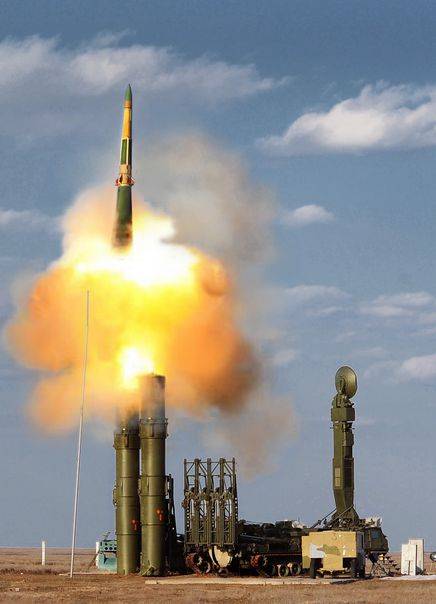
Two or three divisions were organizationally reduced to an anti-aircraft missile brigade, which was also given additional radar means for detecting air targets (radar 1L13 "Sky-SV"), and a radar information processing center. Management of the divisions was carried out with the KP ZRBR with the help of ACS "Polyana-D4".
During the conduct of hostilities, the air defense missile system is deployed in combat order in the position area. The battle formation is built taking into account the specifics of the operational location of the troops and the likely directions of air strikes. As a rule, divisions are located in two lines. In some cases, for example, with the expected actions of an air enemy on a wide front - in one line.
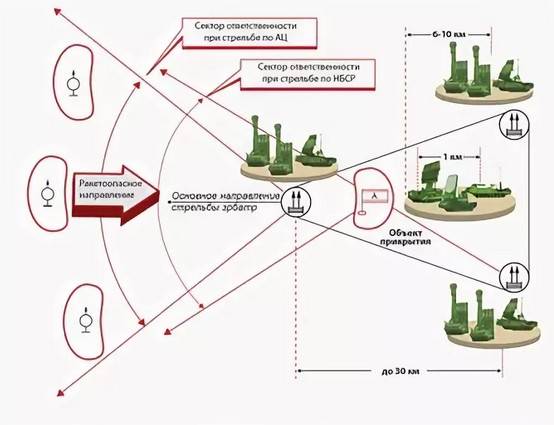
The S-300V anti-aircraft missile brigade in defense should provide cover for the main forces of the army and the front, in the alleged or identified direction of the enemy’s main strike. In an offensive, anti-aircraft missile divisions must follow tank and motorized rifle divisions and provide air defense and missile defense for headquarters and troop concentrations. In peacetime, the S-300V anti-aircraft missile system alternately carried out combat duty near permanent deployment points, providing air defense and missile defense of strategically important facilities.
As already mentioned, the S-300V air defense system in its final form was put into service in 1988, that is, much later than the S-300PT / PS air defense system. The collapse of the Soviet Union and the onset of “economic reforms”, which led to a reduction in the defense budget, had the most negative impact on the number of S-300Vs built, the number of airborne troops delivered to the troops was about 10 times less than the S-300PS. The production of S-300V and 9M82 and 9M83 SAM systems was completed in the early 1990s. For this reason, it was not possible to replace the obsolete Krug air defense systems in a 1: 1 ratio at the front and army level. At the time of the collapse of the USSR, brigades armed with S-300V1 / V air defense systems were not available in all military districts, and the Buk-M1 air defense system, which had limited missile defense capabilities, became the complex of army subordination.
So, after the withdrawal from the Western Group of Forces near Moscow Naro-Fominsk, one 202nd anti-aircraft missile brigade was redeployed, it is currently part of the Western Military District.
Perhaps it will be interesting for readers to compare the S-300V anti-aircraft missile system, which was created for military air defense, and the S-300PS, which became the basis of the country's air defense missile forces in the 1990s. S-300V air defense missile systems began to enter the army 5 years later than the S-300PS air defense system. By that time, the S-300PS ammunition already had a 5V55RM missile system with a firing range of 90 km. At the same time, the 9M82 heavy missile could hit low-maneuverable jammers at ranges of up to 100 km, and the 9M83 main missile from the S-300V arsenal, designed to combat air targets, had a 72 km destruction zone. 5V55R and 5V55RM missiles were cheaper, but they did not have anti-missile capabilities. Due to the use of a caterpillar chassis and much more complex radar systems, the S-300V air defense system was much more expensive than the S-300PS. The S-300V anti-aircraft missile division could simultaneously fire at 24 targets and direct two missiles at each. The S-300PS division simultaneously fired at 12 targets with two missiles pointing at each. However, the S-300V advantage was largely formal, in the S-300PS missile launcher there were usually 32 ready-to-use SAMs, and in the S-300V launcher there were 24 9M83 missiles designed to counter aerodynamic targets and 6 9M82 heavy missiles to intercept ballistic missiles and aeroballistic cruise missiles. Thus, the S-300PS anti-aircraft missile system, at a significantly lower cost for the new complex, was better suited for fighting an air enemy. The S-300P anti-aircraft missile system was better adapted to carry out long combat duty on prepared positions in the engineering field.
In addition, the S-300V launcher, having good fire performance, required more funds for operation and maintenance. The reloading of self-propelled launchers and launchers using 9M82 missiles is quite complicated.
The lack of sufficient funding, the cessation of the production of anti-aircraft missiles and the exhaustion of the reserve of spare parts led to a decrease in the level of combat readiness of the S-300V air defense forces available in the troops. It has become commonplace to carry out combat duty with a reduced number of SAMs on self-propelled launchers.
During the period of "Serdyukovschina", the air defense system of the Ground Forces was further weakened. In connection with the degradation of the country's air defense system, a “wise” decision was made - to transfer part of the anti-aircraft missile brigades equipped with S-300V and Buk-M1 to the Russian Air Force, where anti-aircraft missile regiments were formed on their basis. In addition, one 1545th anti-aircraft missile regiment of the 44th Air Defense Division until 2016 was subordinate to the command of the Baltic fleet.
To eliminate the gaps formed in our air defense system, the S-300V air defense systems, along with the S-300PS / PM and S-400, until recently were on constant combat duty, providing air defense of strategically important facilities, administrative and defense industrial centers. So, in the Far East, the city of Birobidzhan until the spring of 2018 covered the 1724th zrp, in which there were two S-300V anti-aircraft missiles.
S-300V anti-aircraft missile systems are available at Russian military bases abroad. The protection of the 102nd Russian military base in Armenia from air attack and tactical missile attacks is provided by the 988th anti-aircraft missile regiment, which includes two divisions. According to the latest information, before the rearmament of the modernized S-300V4 air defense system, the divisions in the vicinity of Gyumri were on alert with a truncated squad.
In 2016, it became known that the S-300V division, delivered to Syria, was deployed in the vicinity of the port of Tartus, where Russian transport ships delivering defense goods are unloaded. It was reported that anti-aircraft complex detection stations were repeatedly detected and escorted by American combat aircraft.
Sometimes the S-300V air defense system acted as a temporary solution in providing air defense of stationary objects. So, at the end of 2013, the S-5V division was deployed 300 km southeast of Yuzhno-Sakhalinsk. However, in August 2018, at this position he was replaced by the S-300PS division with additional radar facilities attached. Currently, S-300V complexes, built about 30 years ago, have already exhausted their resources and are being decommissioned.
SAM S-300VM and S-300V4
Despite the cessation of serial construction of the S-300V, the head developer Antei continued to improve the universal anti-aircraft missile system. In the early 2000s, foreign buyers were offered an export version of the S-300VM "Antei-2500" - the result of a deep modernization of the S-300V air defense system. This system was able to effectively counteract both ballistic missiles with a launch range of up to 2500 km, and all kinds of aerodynamic and aeroballistic targets. The S-300VM used new 9M83M missiles with a range of destruction of aerodynamic targets up to 200 km, capable of maneuvering with overloads of up to 30 G and 9M82M - to intercept ballistic targets flying at speeds of up to 4500 m / s in opposite directions. The maximum range for firing at BR is 40 km. In this case, up to 4 missiles can be aimed at one target.
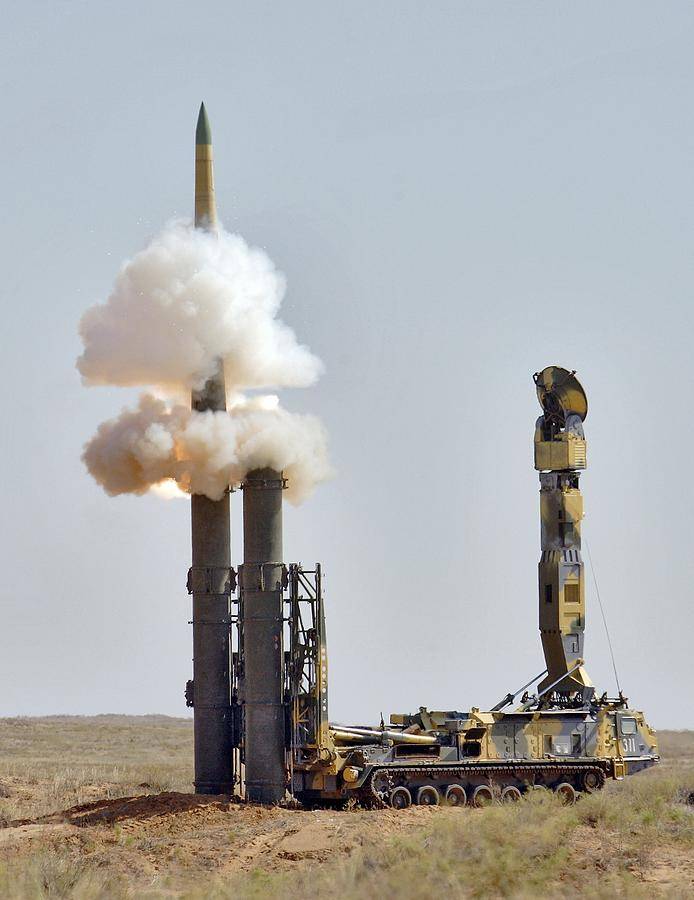
The modernization of radar stations allowed to significantly increase the energy potential. The introduction of more advanced computing tools and software has significantly reduced the response time of the complex and increased the speed of information processing. New means of topographic location and navigation have increased the accuracy of determining the coordinates of elements of air defense systems, which together with the use of digital communication equipment has improved the controllability of combat work. These and other improvements made it possible to double the maximum range of the system when intercepting ballistic missiles twice as compared with the S-300V, and the effectiveness of the fight against aerodynamic targets increased by more than 1,5 times.
In 2013, the delivery of two S-300VM divisions to Venezuela was completed. In 2016, Egypt acquired three divisions. However, a number of sources note that the S-300VM air defense system has less ammunition than the basic S-300V modification.
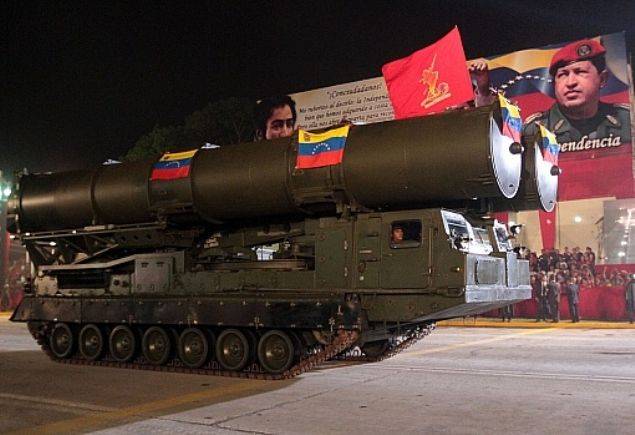
The S-300VM Antey-2500 anti-aircraft missile system, unlike the S-300V, for financial reasons, did not receive a separate heavy launcher and light launcher. As a result, light launchers are placed in launchers in the S-300VM system, and heavy missiles only on launchers.
In addition to the S-300VM Antey-2500 export version, over the years since the cessation of production of the S-300V air defense systems were completed, the following modifications were created: S-300VM1, S-300VM2, S-300VMD, characterized by radar equipment, control, communication and anti-aircraft missiles. However, none of these options has become serial. The developments obtained in the process of creating these modifications were implemented in the S-300B4 serial system, the field tests of which began in 2011, and the adoption of the Ground Defense was adopted in 2014.
There is little reliable information about this system. With a fairly high degree of certainty, it can be argued that due to the use of more powerful radars and the introduction of new missiles with an increased launch weight, the launch range for high-altitude aerodynamic targets exceeded 350 km. The interception height has been brought up to 40 km.
The updated version has become fully digital. It is capable of simultaneously firing and guaranteed to hit 24 aerodynamic targets, including inconspicuous objects, including invisible planes, or 16 ballistic missiles flying at a speed of up to 4500 m / s. According to information published in the media, the combat effectiveness of S-300V4 air defense systems increased by 2–2,3 times. Improved intelligence and fire capabilities, noise immunity were achieved through the introduction of new technologies and hardware, increasing the level of automation of combat process control, introducing advanced technologies and algorithms in the processing of radar and command information.
The S-300V4 anti-aircraft missile battery includes: MSNR 9S32M1, up to six PU 9A83M2 with four 9M83M light launchers each, up to six 9A84–2 ROMs with two 9M82MD heavy launchers each. In the S-300V4 system, “light” 9M83M missiles are located only on the 9A83M2 launchers, and “heavy” 9M82MD missiles are located only on the 9A84–2 launchers. The 9A83M2 launcher is universal, capable of generating flight missions and controlling both “light” and “heavy” missiles in flight.
In 2014, the modernization of the S-300V air defense systems available in the troops began to the S-300V4 level. In order not to completely expose the air defense of the troops and strategically important facilities, the divisions were sent alternately from the anti-aircraft missile brigades and regiments to the enterprises of the Almaz-Antey air defense concern. In the course of work, in addition to replacing electronic components, the repair repair of tracked vehicles is carried out, the production of which has long been discontinued.
According to information published in open sources, as of the end of 2018, the Ground Forces had three brigades of district subordination, two divisions in each: ZVO - 202 zrbr (Moscow Region, Naro-Fominsk), YuVO - 77 zrbr (Krasnodar Territory, the city of Korenovsk), the Central Military District - the 28th zrbr (Chelyabinsk Region, Chebarkul). According to the Russian Ministry of Defense, in 2019, another brigade armed with the S-300B4 was planned to be formed in the Eastern Military District, but it is not known whether this was put into practice. In 2014, it was planned that after bringing all S-300V air defense systems available in the Ground Forces to the S-300V4 level, the next step will be the modernization of the S-300V anti-aircraft missile systems, which are armed with the anti-aircraft missile regiments of the Russian Aerospace Forces. Given that the Russian armed forces currently have a maximum of 12 anti-aircraft missiles equipped with S-300B4, plans were announced for the construction of new anti-aircraft missile systems of this type. However, it is not clear on which caterpillar chassis in this case command posts, radars, launchers and launchers will be placed.
At the end of the publication devoted to the S-300V air defense system, I would like to dwell on a question that is often asked by readers interested in air defense issues. Taking into account the fact that our armed forces have a significant number of S-300P and S-400 air defense systems, it is not clear to everyone why the modernized S-300B4 system is needed. Moreover, as part of the S-400 air defense system, from the very beginning it was declared the use of long-range SAM 40N6E with a firing range of up to 380 km.
Many people forget that the S-300V air defense system was originally created as a universal system designed to provide air defense and missile defense of large military groups in the theater of operations. In this regard, all the main elements of the S-300V were located on tracked vehicles, and in the ammunition there were missiles capable of destroying aerodynamic and ballistic targets. In fairness, it is worth saying that the creators of the latest modification of the S-300B4 managed to introduce a long-range missile earlier, while Russian officials since 2007 promised that the new S-400 missile system is close to completing the tests and is about to enter service. According to available information, the mass production of 40N6E missiles, which should become the "long arm" of the S-400 air defense system, has already begun, but so far there are very few of them in the troops. If you do not take into account the specific requirements for an anti-aircraft system intended for use in the Ground Forces, the main disadvantage of the S-300B4 is its very high cost, which, in fact, makes this air defense system uncompetitive compared to the S-400 in object air defense. Thus, the S-300B4 anti-aircraft missile system occupies its own unique niche in the air defense of the Ground Forces.
The ending should ...
- Linnik Sergey
- Do we have many air defense systems? Anti-aircraft artillery and MANPADS
Do we have many air defense systems? SAM "Strela-10", SAM "Bagulnik" and ZAK "Derivatsiya-PVO"
Do we have many air defense systems? ZPRK "Tunguska" and ZRPK "Shell"
Air defense systems in the Russian Federation. SAM "Osa" and SAM "Tor"
Air defense systems in Russia. SAM "Buk"
The basis of the ground segment of the air defense of the Russian Federation in the 1990s. SAM S-300PT, S-300PS and S-300PM
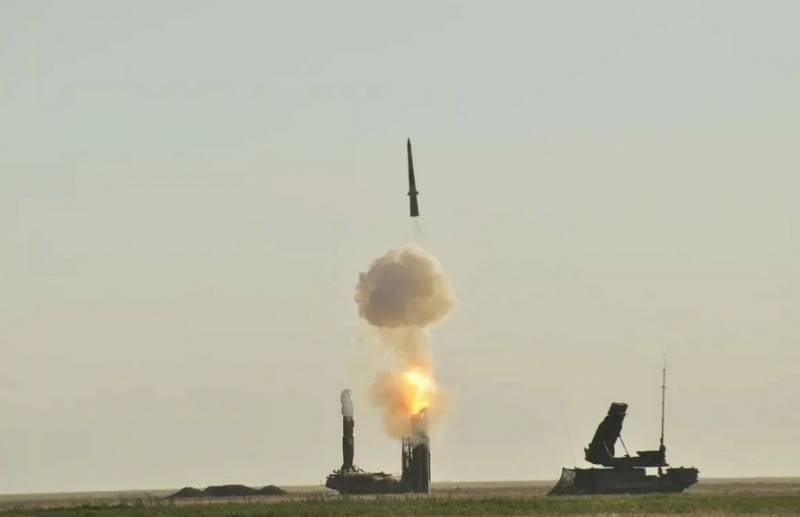
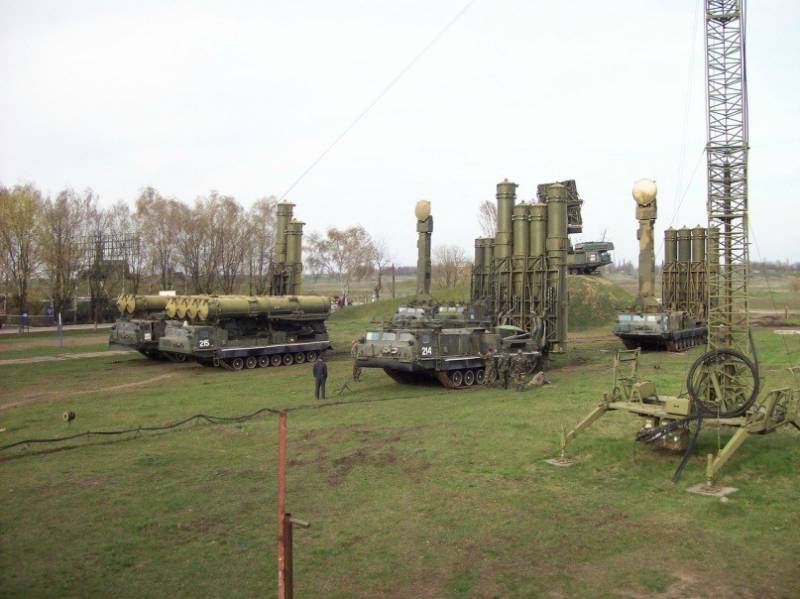
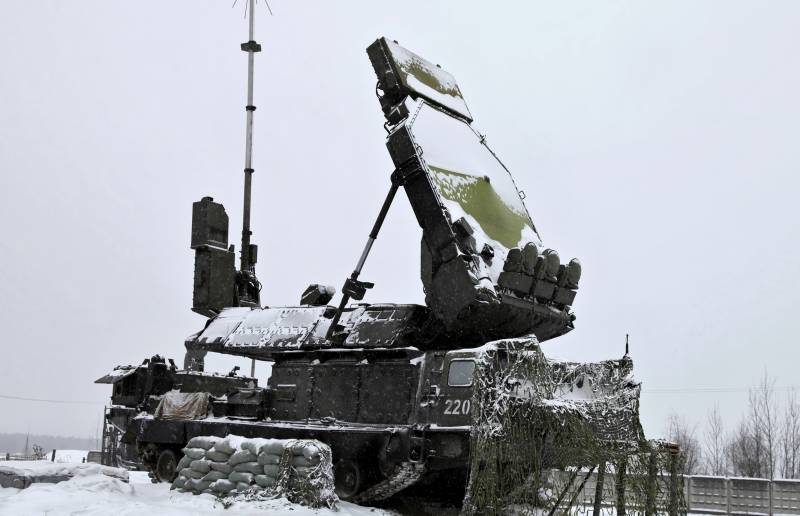
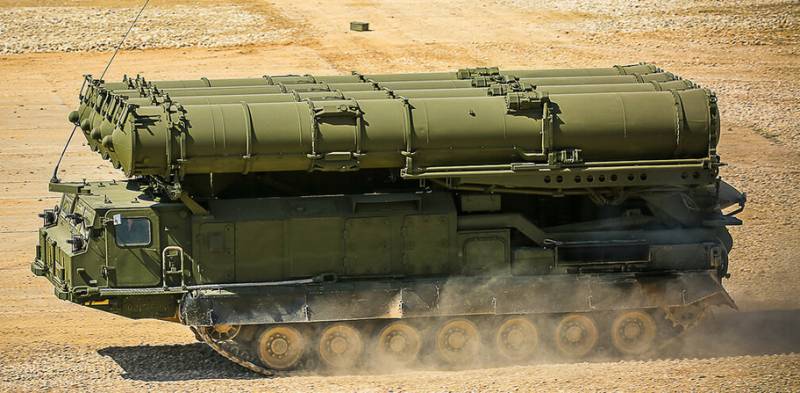
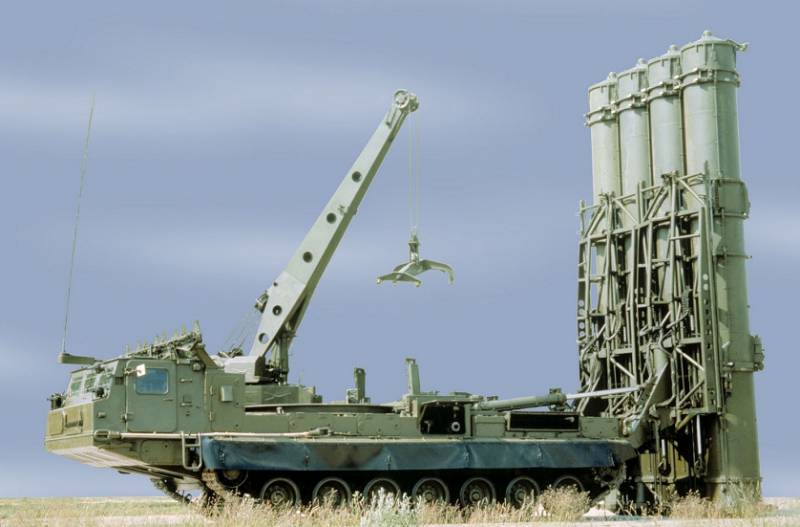

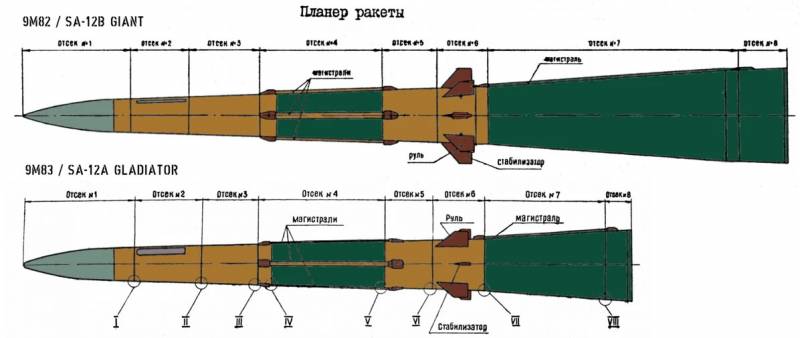

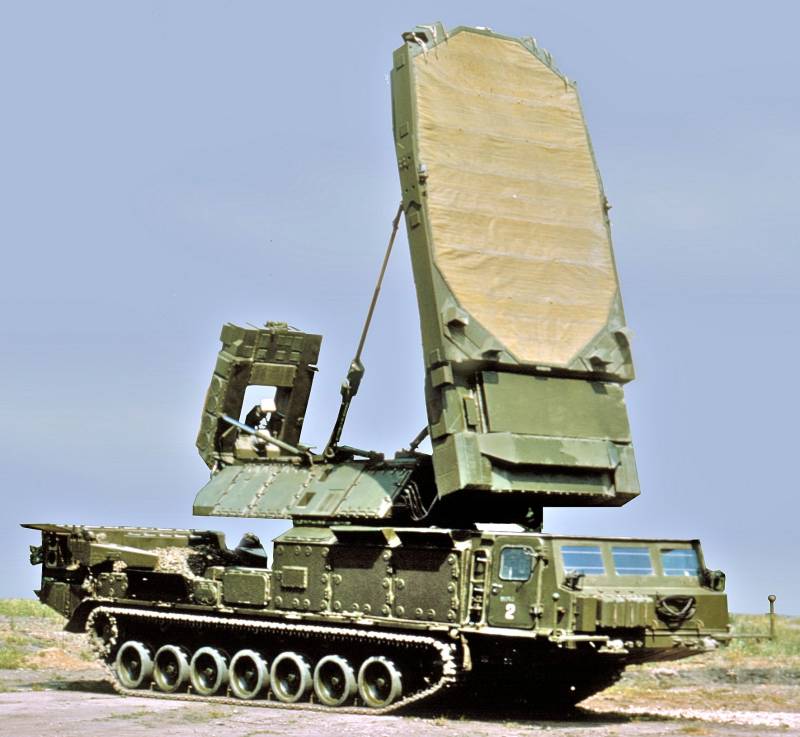
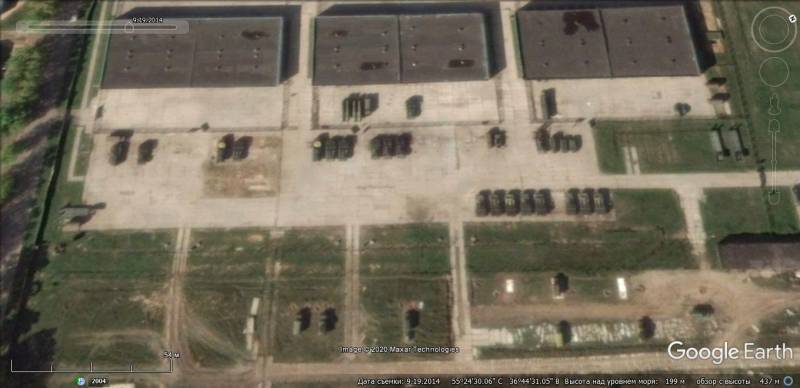
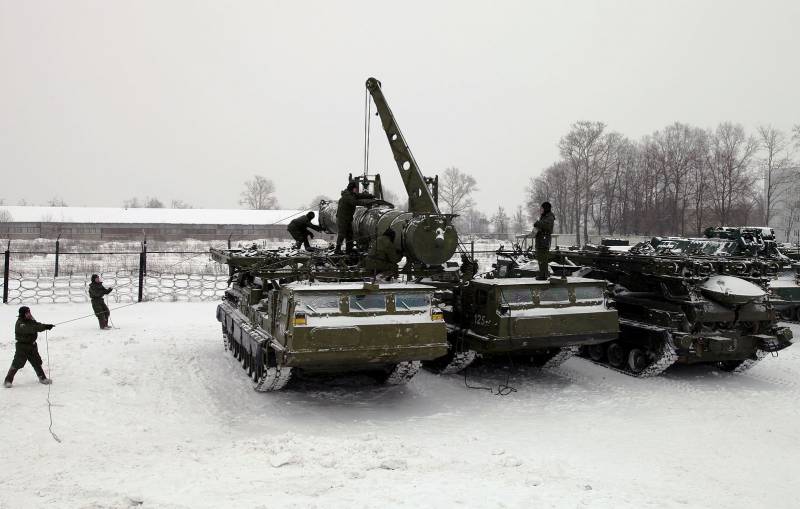

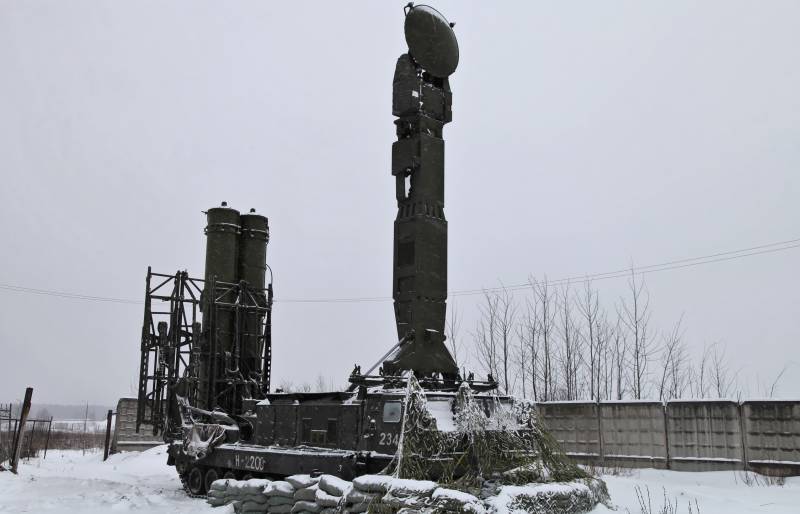
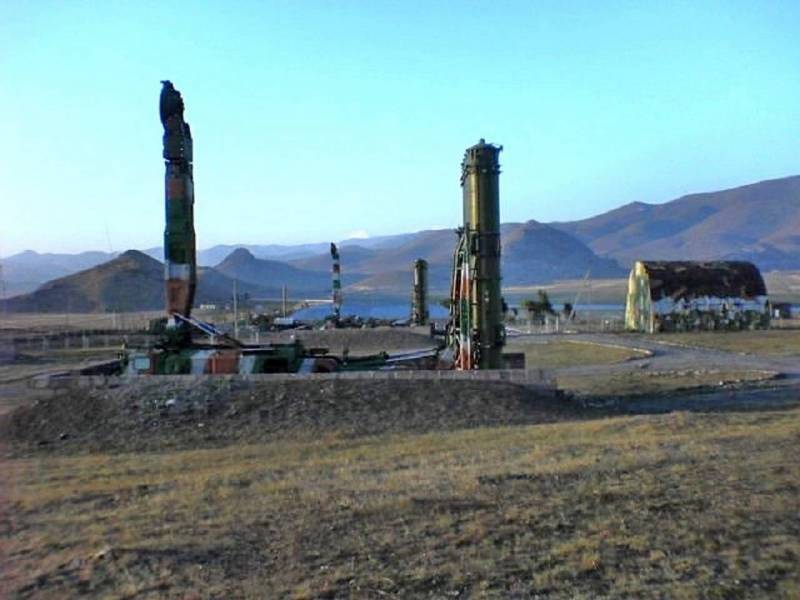
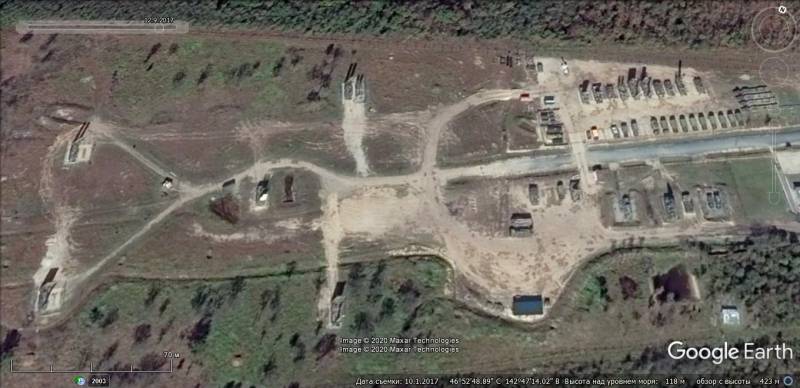
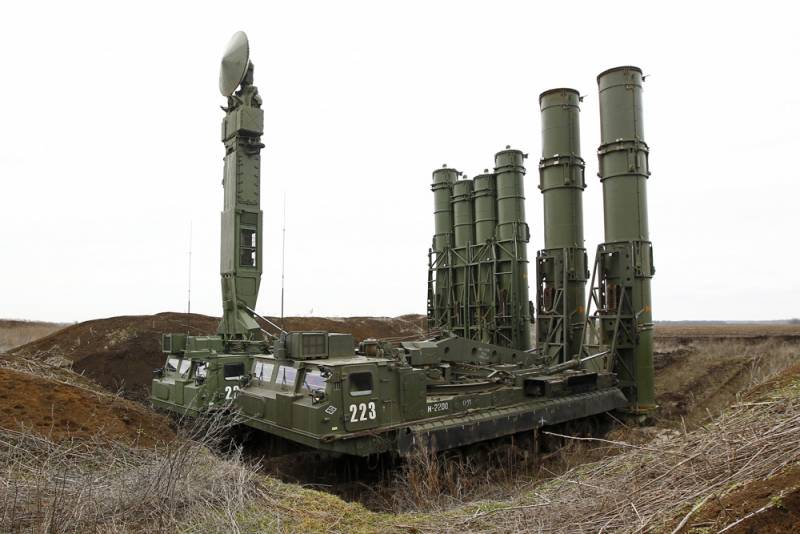
Information